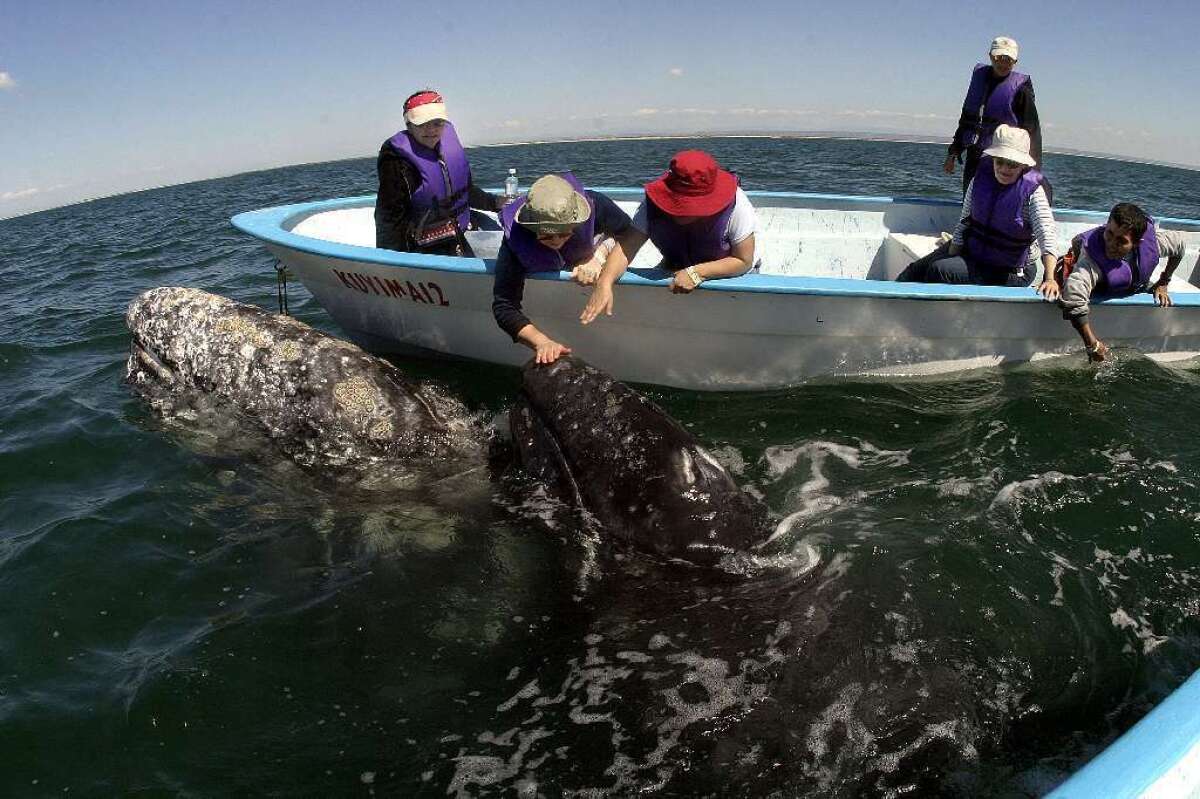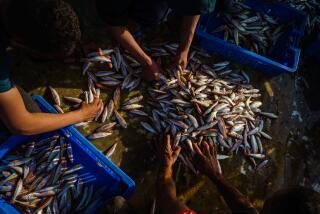How ecotourists actually make things worse for wildlife

Ecotourists meet a California gray whale off the coast of Baja California. In a new study, scientists warn that ecotourists may wind up threatening the very animals they seek to protect.
- Share via
Sometimes it seems humans just can’t do anything right. The well-intentioned, conservation-minded people who spend millions of dollars a year on ecotourism might be making the very critters they’re trying to preserve more vulnerable to predators.
That’s the warning from a group of ecologists working in Brazil, France and the U.S. Writing in the journal Trends in Ecology & Evolution, they offer a plethora of reasons why wild animals might suffer from the benign attention of humans.
People visit protected nature areas an estimated 8 billion times a year, and they spend about $600 billion while doing so, according to a February report in PLOS Biology. What distinguishes these trips from other types of travel is that they allow tourists to see wild places in a way that “conserves the environment, sustains the well-being of the local people, and involves interpretation and education,” according to the International Ecotourism Society.
But there are several ways that these well-intentioned visits can backfire, the new report says.
For instance, simply spending time around humans can lull animals into a false sense of security. Evidence for this comes from studies of “flight initiation distance,” which is a measure of how close to a threat an animal is willing to be before it tries to escape. Researchers have found that the wild animals living around people in urban areas have smaller flight initiation distances than animals living in rural areas, where humans are more scarce.
In one experiment, urban fox squirrels allowed people to get seven times closer to them before running away compared with fox squirrels in rural areas. (Similar patterns have been observed with birds.) The foxes that were used to people also had a tamped-down response to the vocalizations of their predators, according to a 2009 study in the journal Landscape Ecology.
Even when people ignore the wildlife around them, they tend to create a “human shield” that protects certain animals that would otherwise wind up as prey, the authors of the new study warn. That’s because their predators are afraid to penetrate the human shield to hunt. As a result, the prey animals become less vigilant to threats.
When ecotourists venture into the wild, they create what amounts to a “temporary human shield,” the study authors wrote. Evidence for this comes from Grand Teton National Park, where the more tourist traffic there was, the less time pronghorn sheep and elk spent in “alert postures,” according to a 2014 report in PLOS One. The animals also gathered in smaller groups when more tourists were nearby.
There’s even biological evidence that some animals (in this case, iguanas) exposed to tourists produce fewer stress hormones.
In places where tourism is seasonal, the temporary protection afforded by tourists could make wildlife more vulnerable in the months when humans are not around, the new study warns.
Ecotourism may also make life easier for poachers, the study authors added. Some animals, such as elephants, are able to distinguish between threatening and nonthreatening humans. But other animals are less savvy. Field researchers have found that gorillas and Barbary macaques that have become habituated to tourists were slower to hide, flee or attack when poachers approached.
These risks may mean that ecotourism should be added to the list of human activities that are making the world less hospitable for wildlife — a list that includes things like climate change, deforestation and pollution, the ecologists wrote.
Something to think about before you book your next vacation.
Follow me on Twitter @LATkarenkaplan and “like” Los Angeles Times Science & Health on Facebook.
MORE FROM SCIENCE:
Massive El Niño is now ‘too big to fail,’ scientist says
Mars had a long-lasting series of lakes, NASA’s Curiosity rover finds
DNA from 4,500-year-old Ethiopian reveals surprise about ancestry of Africans







